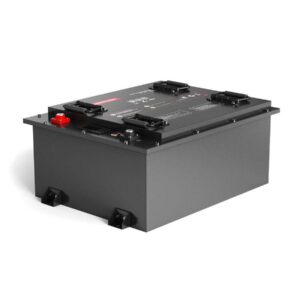
What does AGM mean on batteries?
AGM (Absorbent Glass Mat) denotes a lead-acid battery where electrolyte is held in glass fiber mats between plates, eliminating free liquid. This design enables spill-proof operation, higher vibration resistance, and deeper discharge cycles versus flooded batteries. AGMs are valve-regulated (VRLA) for gas recombination, making them ideal for UPS, marine, and automotive auxiliaries requiring maintenance-free power.
How to Safely Dispose of and Recycle Car Batteries
What defines AGM battery technology?
AGM batteries use fiberglass separators to absorb and immobilize sulfuric acid, creating a nonspillable, recombinant structure. The VRLA (valve-regulated) system safely vents excess pressure during overcharge, unlike flooded batteries needing water refills. This allows versatile mounting angles and reduced corrosion risks.

AGM cells operate at 2.10–2.45V per cell (12V system: 12.6–14.7V). The glass mats provide 90–93% porosity, ensuring optimal acid-plate contact for low internal resistance (3–8 mΩ). Pro Tip: Never expose AGMs to >14.7V sustained—it dries mats, causing irreversible capacity loss. For example, a 100Ah AGM battery can deliver 500–800 cycles at 50% DoD, versus 200–300 cycles for flooded equivalents. But why does mat compression matter? Insufficient plate pressure increases resistance, reducing cold cranking performance by 15–20%.
AGM vs. Flooded Batteries: Key Differences?
AGM batteries outperform flooded types in lifespan, safety, and power density but cost 1.5–2x more. Flooded batteries require ventilation and regular watering but handle higher temperatures better.
Practically speaking, AGMs excel in applications where vibration or tilt is common—think boats or RVs. Their sealed design prevents acid leaks even if cracked. However, flooded batteries still dominate cost-sensitive roles like car starting. A key technical difference: AGMs have 20–30% faster recharge rates due to lower resistance. Pro Tip: For solar storage, AGMs handle partial states of charge better than flooded, extending life by 1–2 years. What’s the catch? AGMs are sensitive to overcharging—exceeding 14.7V accelerates grid corrosion.
| Feature | AGM | Flooded |
|---|---|---|
| Maintenance | None | Water refills |
| Spill Risk | Zero | High |
| Cycle Life (50% DoD) | 500–800 | 200–300 |
What are AGM batteries best used for?
AGM batteries thrive in deep-cycle roles needing vibration resistance and safety—marine trolling motors, RV house banks, and UPS systems. Their low self-discharge (1–3% monthly) suits seasonal equipment.
Beyond basic uses, AGMs power critical medical devices due to zero off-gassing. Their 300–1000 CCA (cold cranking amps) also make them viable for premium automotive start-stop systems. Pro Tip: Pair AGMs with lithium-compatible solar charge controllers—they handle AGM’s absorption phase better than PWM models. For example, a 200Ah AGM bank can power a 1kW RV load for 4–5 hours daily. But why avoid AGMs in high-heat environments? Prolonged exposure >40°C degrades seals, cutting lifespan by 30–50%.
How to charge AGM batteries correctly?
Charge AGMs using three-stage chargers (bulk/absorption/float) with voltage limits: 14.4–14.7V absorption, 13.6–13.8V float. Avoid constant-voltage charging without current regulation.
Technically, AGM charging currents should be 10–30% of capacity (e.g., 20A max for 100Ah). Absorption phase must continue until current drops to 0.5–1% of Ah rating. Pro Tip: Use temperature-compensated charging—AGMs need -3mV/°C/cell adjustment. For instance, at 35°C, reduce absorption voltage by 0.21V (12V system). But what if using a lithium charger? Its higher 14.6V bulk may suffice, but missing float stages risks undercharging by 10–15%.
| Charger Type | AGM Voltage | Flooded Voltage |
|---|---|---|
| Bulk Phase | 14.4–14.7V | 14.8–15V |
| Float Phase | 13.6–13.8V | 13.2–13.5V |
What affects AGM battery lifespan?
Depth of discharge (DoD), temperature, and charging practices dictate AGM longevity. Keeping DoD ≤50% and temps at 20–25°C maximizes cycle counts.
Practically speaking, a 100Ah AGM cycled to 70% DoD lasts ~400 cycles versus 600 at 50%. High ambient heat (>30°C) accelerates plate corrosion, while sub-zero charging reduces efficiency by 20–40%. Pro Tip: Equalize AGMs only if voltage drops below 12.4V—use 15V for 2–4 hours max. For example, marina AGMs average 3–5 years, while climate-controlled data center units last 6–8 years. Why avoid deep discharges? Sulfation starts below 11.8V, permanently reducing capacity.
Best Lithium Car Batteries for Cold Cranking Amps
Battery Expert Insight
FAQs
Can AGM and flooded batteries be mixed in a bank?
No—different charge profiles cause under/overcharging. Mixing reduces bank lifespan by 40–60%.
Do AGM batteries need ventilation?
Minimal—they release less gas than flooded. But install in breathable areas; hydrogen buildup during faults is still possible.
How to store AGM batteries long-term?
Charge to 100%, disconnect loads, and store at 10–25°C. Recharge every 6 months to prevent voltage drop below 12.4V.
